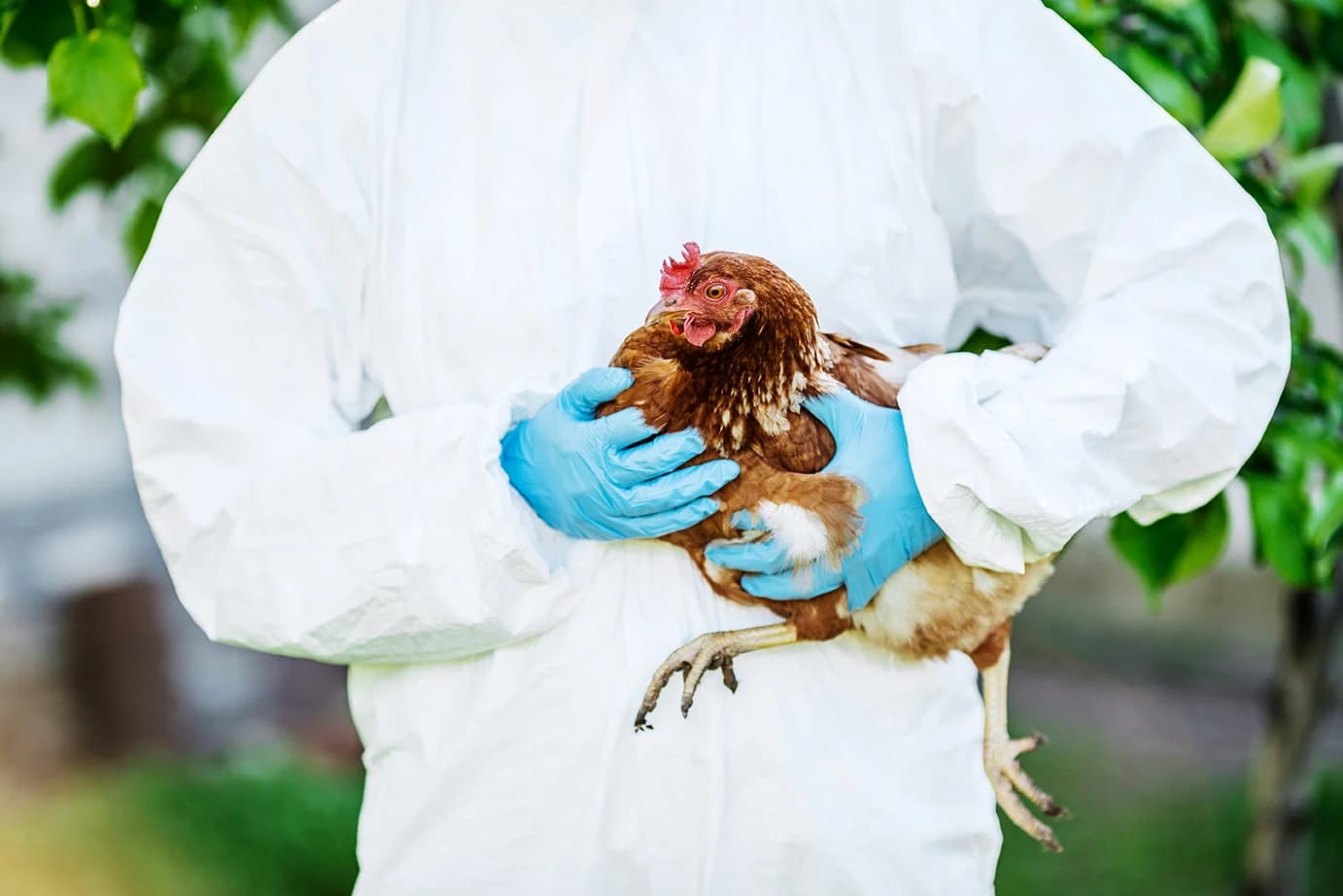Article
Avian Flu in the US: What to Know and How to Stay Safe
18 NOV 2024
/
3 min read

As of November 2024, health authorities in the US are closely monitoring cases of avian influenza A(H5), commonly known as bird flu. This virus, primarily spread by birds, has led to human infections across several states, with California seeing the highest numbers. Although outbreaks are also reported in other states, particularly Washington and Colorado, the CDC emphasizes that the general public faces a low risk.
Through ongoing surveillance and testing, health officials aim to better understand and control the spread of this virus, especially in areas where animals may be infected. For those in close contact with birds or livestock, a few essential preventive measures can make a significant difference in reducing exposure.
Key Takeaways at a Glance
- Surveillance Efforts: Since April 2024, the CDC has monitored more than 6,800 individuals for possible exposure, with 48 states reporting outbreaks in poultry and 15 states with infections in dairy herds.
- Human Cases Reported: 46 confirmed cases of avian flu in humans have been recorded from April to early November 2024.
- Geographic Impact: California is currently most affected, reporting 21 cases tied to dairy cows, followed by poultry-related cases in Washington (11 cases) and Colorado (10 cases).
- Low Public Risk: The CDC states that avian flu poses minimal risk to the general population. There is no sustained person-to-person transmission of avian flu at this time. Transmission occurs mostly through direct contact with infected animals or contaminated environments.
Avian Influenza A(H5): Transmission and Risks
Avian flu typically spreads through direct contact with infected animals like wild birds, poultry, and, in recent cases, dairy cows. The virus can transfer from these animals to humans through touching, handling, or exposure to areas contaminated by sick animals or their waste. In October 2024, the virus was also detected in a pig in Oregon, a rare instance that broadens the scope of animal infections.
Most human cases result from direct exposure, especially among individuals working closely with poultry, livestock, or wild birds. Person-to-person transmission remains rare and is typically found among family members or healthcare workers in close contact with an infected person.
Individuals with pre-existing respiratory conditions or a compromised immune system may be more susceptible to infection.
Precautions to Lower Infection Risk
For individuals in frequent contact with animals, the following simple measures can help reduce exposure to avian flu:
- Avoid Contact with Birds and Poultry Droppings: Steer clear of handling wild birds, poultry, and their droppings, especially in areas experiencing sudden flock die-offs.
- Wash Hands Frequently: Wash hands with soap and water regularly, especially after handling animals. Use alcohol-based sanitizer when soap and water aren’t available.
- Cook Animal Products Thoroughly: Ensure all poultry and eggs are fully cooked before consumption to eliminate any viral particles.
- Wear Protective Gear: Farmers, veterinarians, and others working with animals should consider masks and gloves to reduce risk when dealing with potentially infected animals.
- Refrain From Touching Face: Keep hands away from eyes, nose, and mouth after handling animals or being in potentially contaminated environments.
When to Seek Medical Advice
Recognizing avian flu symptoms early is critical, as they can mimic common respiratory infections. Key signs include:
- High Fever: Often one of the first indicators.
- Cough and Shortness of Breath: Respiratory symptoms are common and can range in severity.
- Additional Symptoms: Muscle aches, sore throat, and general weakness may also appear, depending on the infection’s severity.
Contact a healthcare provider immediately if an avian flu exposure is suspected. Isolation and early antiviral treatment can help manage the illness and prevent further spread.
By knowing the risks and symptoms and following these preventive steps, individuals can help protect themselves from avian influenza. To learn more about avian flu, visit WHO. Explore how Crisis24 helps organizations keep employees informed and safe from health risks such as avian flu.
Related
Tags
Sharpen your
view of risk
Subscribe to our newsletter to receive our analysts’ latest insights in your inbox every week.
Intelligence & Insights
Intelligence
Worth Gathering
Employing a team of 200+ analysts around the world, Crisis24 is the only source you need for on-point, actionable insights on any risk-related topic.

Intelligence Analysis
The Rising Risk of Laser Attacks on Pilots and Aircraft Operations
Laser strikes on aircraft pose serious safety risks to pilots and passengers. Learn about impacts, enforcement, and prevention strategies to reduce incidents.
By Janna Hyland
November 20, 2025

eBook
Preparing for the Soccer World Cup 2026 – Mexico Travel Advisory
The upcoming World Cup tournament is set to be the largest in history unfolding across three nations – the US, Mexico, and Canada – with each country presenting unique security challenges for travellers. Learn about the specific risks associated with the games in Mexico.
November 18, 2025

Article
The Power of Preparation Against Active Assailant Threats: Building Crisis Management Capabilities
Build readiness against active assailant threats with Crisis24’s proven preparedness framework.
By Graeme Hudson
November 17, 2025

Article
Strengthening Modern Supply Chains: How Intelligence and Risk Monitoring Reduce Disruption
Real-time intelligence and risk monitoring can help protect your supply chain and global operations during time of disruption or volatility.
November 17, 2025






